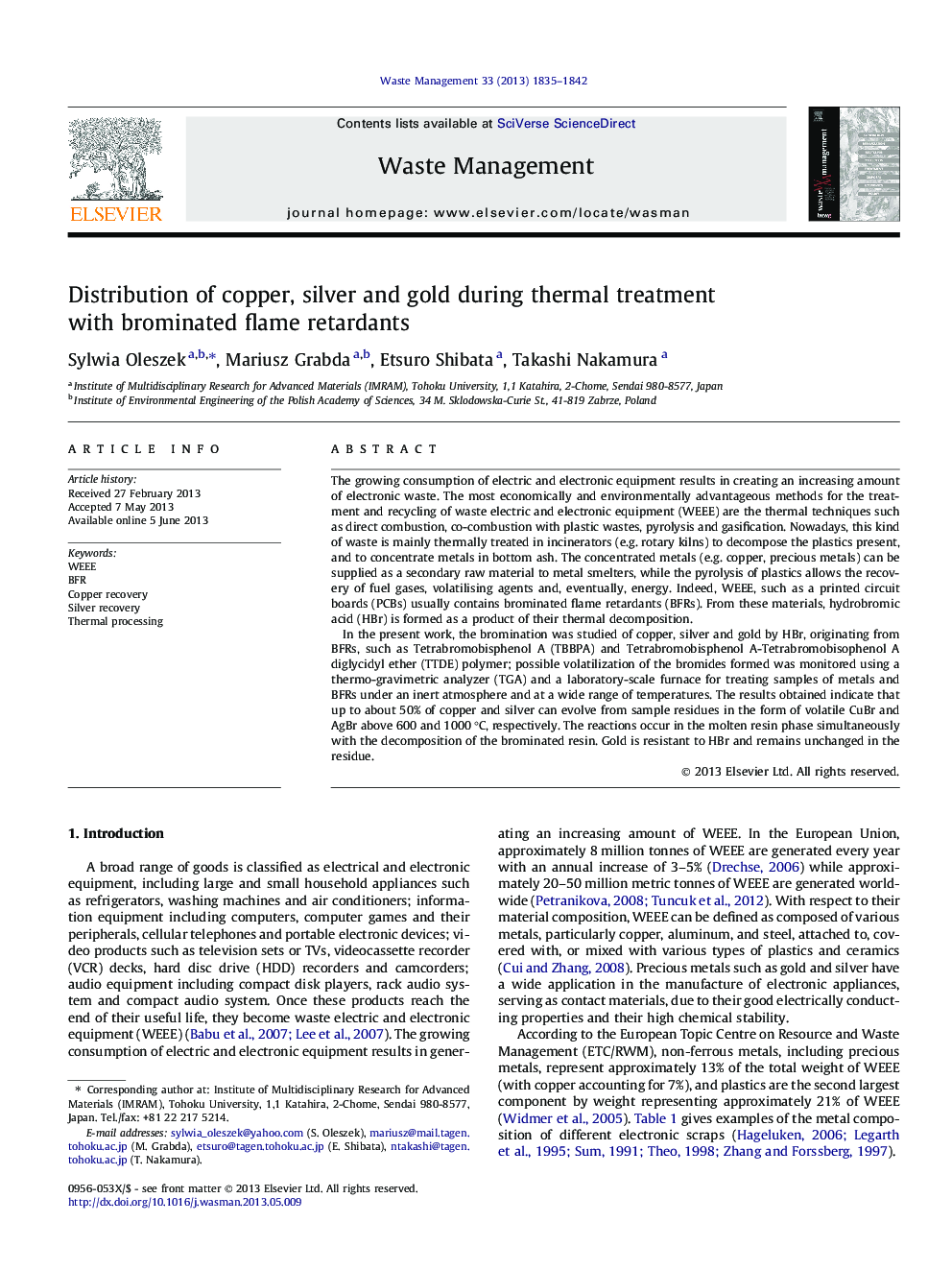| کد مقاله | کد نشریه | سال انتشار | مقاله انگلیسی | نسخه تمام متن |
|---|---|---|---|---|
| 4471831 | 1315045 | 2013 | 8 صفحه PDF | دانلود رایگان |

• Copper, silver and gold during thermal treatment with brominated flame retardants.
• Distribution of copper, silver and gold during thermal processing.
• Thermodynamic considerations of the bromination reactions.
The growing consumption of electric and electronic equipment results in creating an increasing amount of electronic waste. The most economically and environmentally advantageous methods for the treatment and recycling of waste electric and electronic equipment (WEEE) are the thermal techniques such as direct combustion, co-combustion with plastic wastes, pyrolysis and gasification. Nowadays, this kind of waste is mainly thermally treated in incinerators (e.g. rotary kilns) to decompose the plastics present, and to concentrate metals in bottom ash. The concentrated metals (e.g. copper, precious metals) can be supplied as a secondary raw material to metal smelters, while the pyrolysis of plastics allows the recovery of fuel gases, volatilising agents and, eventually, energy. Indeed, WEEE, such as a printed circuit boards (PCBs) usually contains brominated flame retardants (BFRs). From these materials, hydrobromic acid (HBr) is formed as a product of their thermal decomposition.In the present work, the bromination was studied of copper, silver and gold by HBr, originating from BFRs, such as Tetrabromobisphenol A (TBBPA) and Tetrabromobisphenol A-Tetrabromobisophenol A diglycidyl ether (TTDE) polymer; possible volatilization of the bromides formed was monitored using a thermo-gravimetric analyzer (TGA) and a laboratory-scale furnace for treating samples of metals and BFRs under an inert atmosphere and at a wide range of temperatures. The results obtained indicate that up to about 50% of copper and silver can evolve from sample residues in the form of volatile CuBr and AgBr above 600 and 1000 °C, respectively. The reactions occur in the molten resin phase simultaneously with the decomposition of the brominated resin. Gold is resistant to HBr and remains unchanged in the residue.
Journal: Waste Management - Volume 33, Issue 9, September 2013, Pages 1835–1842